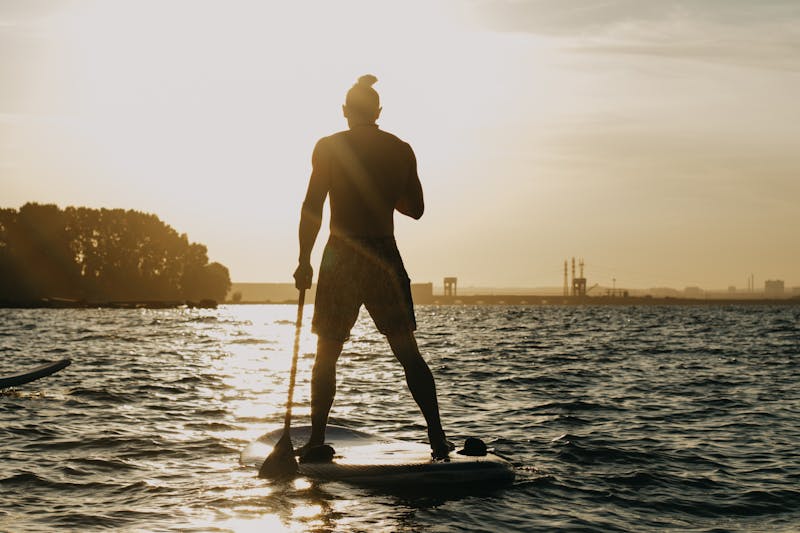The Art of Selecting the Perfect Stand Up Paddle Board – An Essential Guide

The sport of stand up paddleboarding (SUP) has surged in popularity in recent years. Whether you’re gliding along a tranquil lake at dawn or catching gentle waves at the beach, SUP offers a unique blend of adventure, fitness, and communion with the great outdoors unlike any other sport. But what if you’re a novice eager to embark on this new aquatic endeavour, or you’re an enthusiast contemplating an upgrade from your current board, where do you begin? There’s a wide diversity of paddle boards in the marketplace, all with different specs, from materials, size, shape to additional features—how do you determine which is right for you?
That’s where this guide comes in. My aim is to enlighten you about the essential factors you should consider when buying a paddle board—factors that’ll ensure you make the right choice, one that suits your needs and desires thoroughly. So whether you’re embarking on this adventure out of curiosity or upgrading out of a burning passion to conquer new aquatic territories, this guide is for you.
Let’s dive into the world of paddle boards, from asking the essential “wh-” questions, to probing the pros and cons of each aspect, to answering the value enhancing questions you might not even know you should ask.
Why Stand Up Paddle Board?
why choose stand up paddle boarding? Why not kayaking, surfing or any other water-based sport? Apart from a delightful workout, SUP brings a sense of peace and connection with nature that few other activities offer. The standing position offers a unique perspective both above and below the waterline. Plus, with advancements in board technology, the sport has become more accessible than ever before.
Not just that, SUP boarding is also a versatile sport. Relax with a gentle paddle on a calm lake, go with the waves if you advocate for more action or use it as a team bonding exercise—it caters to a multitude of tastes. Lastly, it’s relatively easy to pick up, so you can be out in the water, enjoying the sport with minimal training.
Of course, the sport is not without its risks, as with any other. It needs balanced body coordination and a keen awareness of your surroundings, especially in wilder waters. Plus, you’ll be sharing the space with other water enthusiasts, hence safety becomes paramount.
What to Look for in a Stand Up Paddle Board?
When deciding what SUP board to buy, factor things like the board’s construction and material, its length and width, the hull type and volume, and whether it is inflatable or solid. Each of these aspects will significantly influence both your on-water performance and the amount of joy you derive from the sport.
In terms of construction and materials, epoxy boards are robust and offer a good balance between weight and performance, while inflatables, with their PVC exteriors, offer great portability and ease of storage. The choice between the two often depends on individual preference, storage space, and your willingness to sacrifice a little performance for convenience.
Coming to size, longer boards will naturally be faster, while wider ones will be more stable. A board’s hull type – whether it’s a planing or displacement hull, also makes a big difference in performance, with the former suited for leisurely paddling and the latter for speed and long-distance voyages.
When to Invest in Your Own Stand Up Paddle Board?
If you’re new to SUP, you might want to rent before deciding to invest in your own. Rentals allow you to experiment with different types of boards and find out what suits you best. But once you’re hooked (which is quite imminent), having your own board opens the road to impromptu sessions, better performance and customized features.
Also, consider purchasing your own board if you’ve been renting and you find yourself hitting the waters so often that the rent outpays the cost of a board, or if you find the shared boards not up to your hygiene standards.

Which Stand Up Paddle Board is Right for You?
Deciding which paddle board is right primarily revolves around your skill level, intent of use, and body weight. Novices and people who want a relaxed ride typically go for bigger, flatter boards for their stability, while pros seek sleek, slim boards that offer speed and maneuverability.
If you’re a beginner, look for a wide, long and thick SUP, as it will be more stable and forgiving. If you’re looking to use your SUP for yoga or fitness, again a wider board is preferable. For gear-heavy tours, go for a high-volume, displacement-hull board.
Pros and Cons of Different Stand Up Paddle Boards
Lastly, let’s delve into the advantages and disadvantages of different types of SUP boards. Inflatable boards, for example, are portable and easier to store, making them ideal for travellers. But they are slower and less rigid than solid boards—something to take into consideration.
Solid boards (typically composed of foam and epoxy), on the other hand, offer better performance and durability. They glide more smoothly and swiftly in the water but are relatively harder to transport and require more storage space.
Art of Making the Choice &Frequently Overlooked Factors
Factors that are often overlooked when choosing a SUP include your future aspirations in the sport and the conditions you’ll primarily be paddling in. For instance, if you plan to paddle in the ocean, surf-specific boards that are shorter, with a narrower nose and tail, would be best.
Another factor is the cost of added extras like a good paddle, a leash, and a board bag for protection. These factors, while seeming insignificant initially, can considerably influence your overall experience, so it’s essential to factor them in upfront.
Conclusion: Charting an Informed Path to Your Stand Up Paddle Board Purchase
Selecting your first or next stand-up paddleboard may feel overwhelming with the myriads of choices available. However, with precise knowledge of what factors to consider, the decision-making process can be a lot smoother and more pleasant. Through understanding why you want to SUP, what you’re looking for in a board, when to invest in your own, which board suits you best, and weighing the pros and cons, you’ll be better equipped to choose a board that’s a perfect match for you.
And remember, the paddle board you end up choosing is not just an equipment—it’s your partner in adventure as you commune with the water and the beautiful wilderness that it lays amidst. Here’s to charting your very own, unique aquatic journey with the perfect paddle board by your side!







